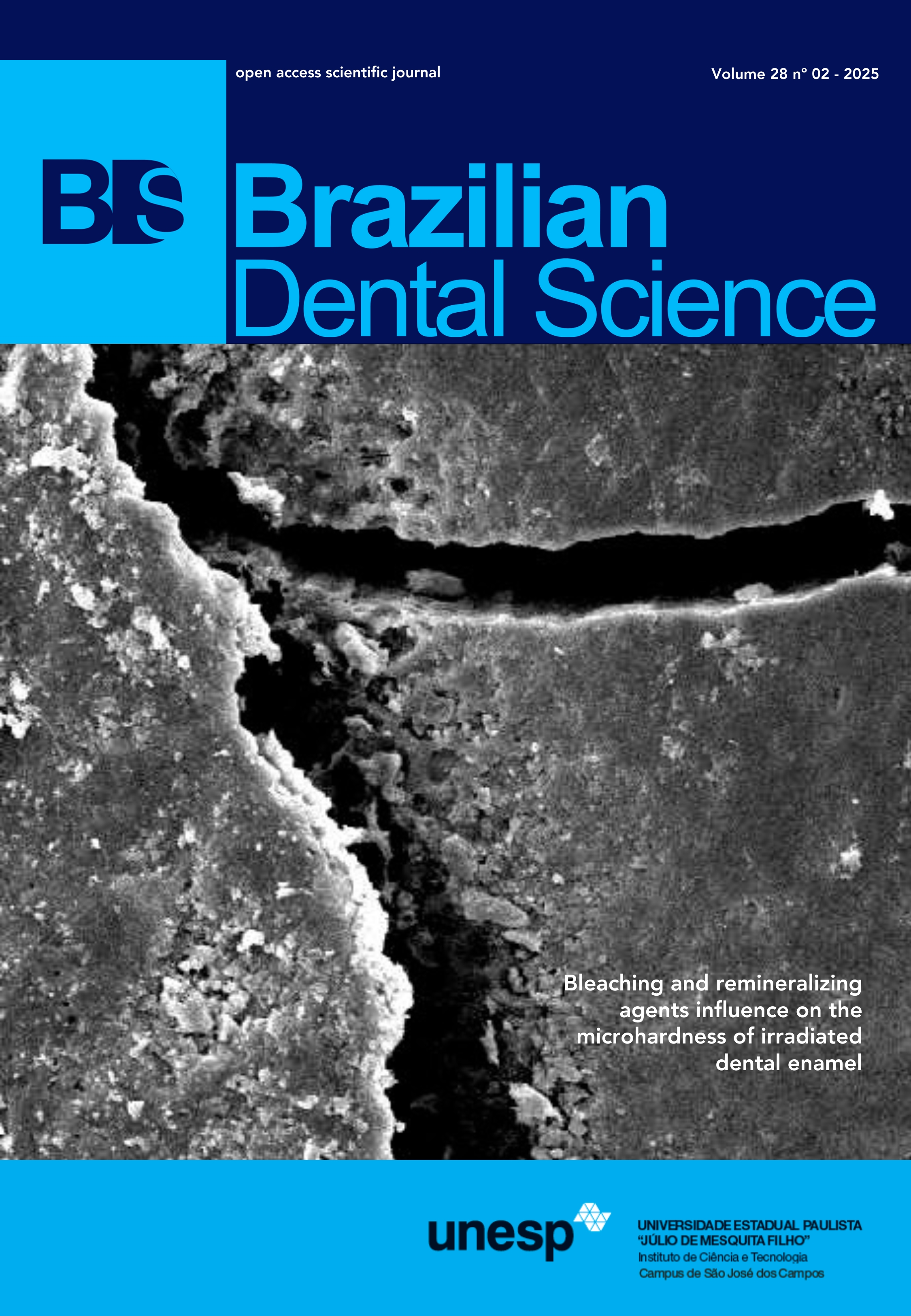Early enamel affected lesions: benefits and limitations of simplified resin techniques
DOI:
https://doi.org/10.4322/bds.2025.e4549Resumo
Objectives: Advances in the early diagnosis and detection of enamel lesions have led to the development of commercially available adhesive resin-based systems designed to enable smart and minimally invasive treatment strategies. These systems are particularly valuable when the exclusive management of etiological factors and/or remineralization is insufficient or no longer effective. In addition to their management, carious lesions invoke strategies aimed at filling the subsurface porosities, whereas erosive tooth wear (ETW) requires the application of external protective measures that serve as a mechanical barrier to mitigate the effects of acidic attacks. Case Report: The present article presents two case reports involving young patients treated with simplified techniques, either with resin infiltration to recover white spot lesions caused by caries or ion-enriched systems to protect the external surfaces affected by ETW. Effective, reliable, and long-term outcomes depend on a thorough comprehension of dental surface alterations which guides the appropriate selection and use of simplified and conservative resin materials. Conclusion: The integration of early diagnosis with minimally invasive procedures, supported by a person-centered care approach, has demonstrated long-lasting and successful clinical outcomes.
KEYWORDS
Dental caries; Early diagnosis; Resin infiltrant; S-PRG particle; Tooth erosion.
Downloads
Downloads
Publicado
Como Citar
Edição
Seção
Licença
Copyright (c) 2025 Brazilian Dental Science

Este trabalho está licenciado sob uma licença Creative Commons Attribution 4.0 International License.
TRANSFERÊNCIA DE DIREITOS AUTORAIS E DECLARAÇÃO DE RESPONSABILIDADE
Toda a propriedade de direitos autorais do artigo "____________________________________________________________________" é transferido do autor(es) para a CIÊNCIA ODONTOLÓGICA BRASILEIRA, no caso do trabalho ser publicado. O artigo não foi publicado em outro lugar e não foi submetido simultaneamente para publicação em outra revista.
Vimos por meio deste, atestar que trabalho é original e não apresenta dados manipulados, fraude ou plágio. Fizemos contribuição científica significativa para o estudo e estamos cientes dos dados apresentados e de acordo com a versão final do artigo. Assumimos total responsabilidade pelos aspectos éticos do estudo.
Este texto deve ser impresso e assinado por todos os autores. A versão digitalizada deverá ser apresentada como arquivo suplementar durante o processo de submissão.




























